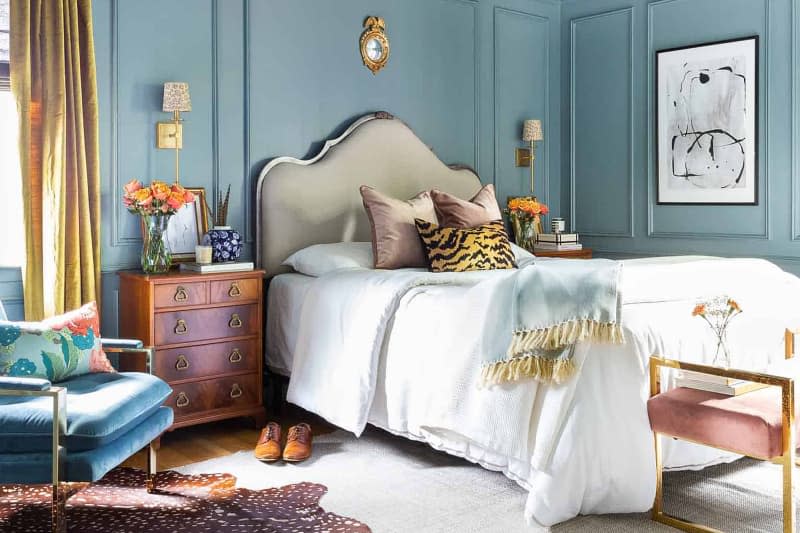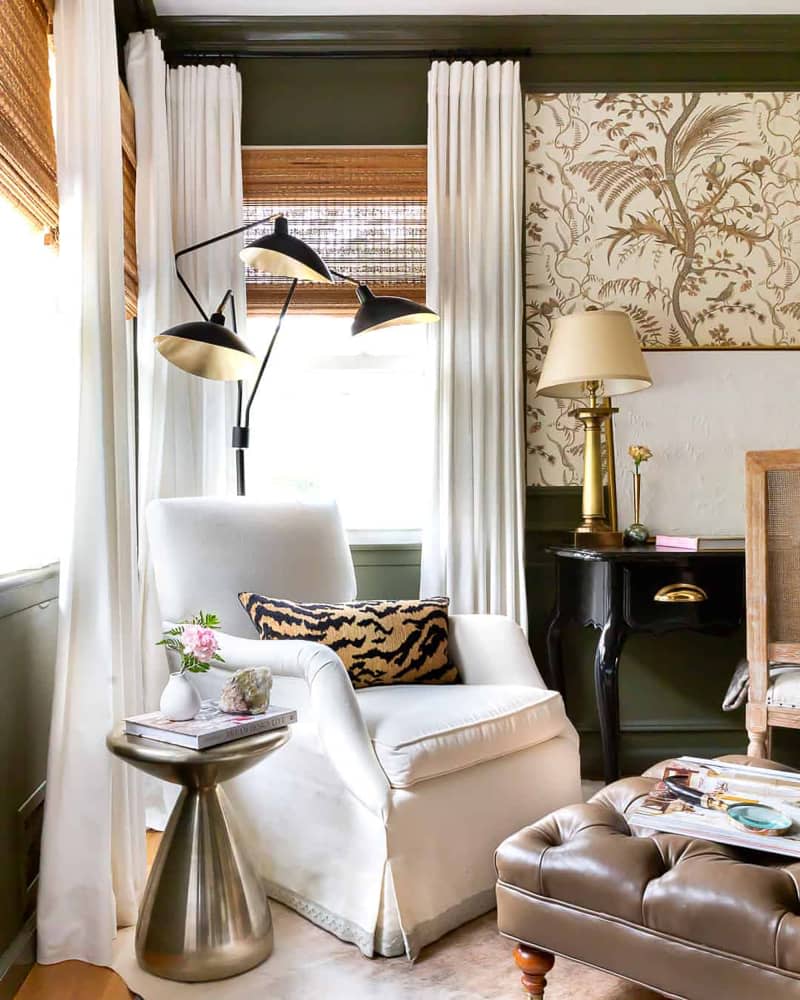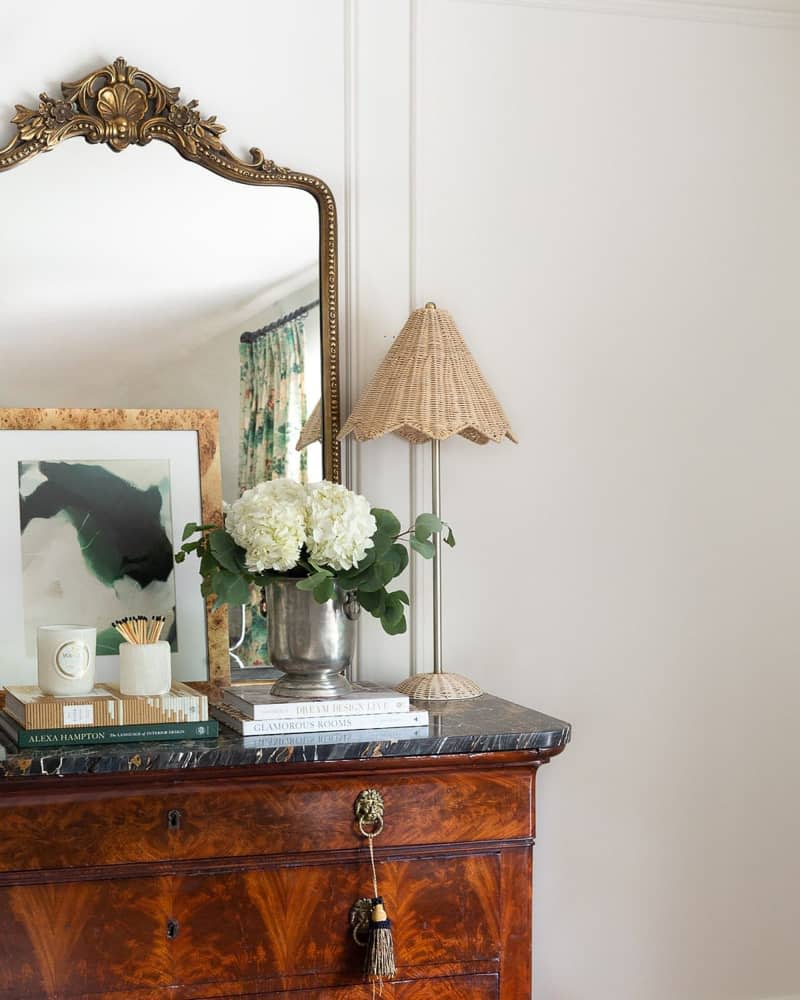How to Buy Furniture & Decor on Facebook Marketplace, According to a Top User

As someone who checks Facebook Marketplace religiously, I’ve seen a little bit of everything up for sale, from vintage dollhouses to nautical code flags to a Spongebob-shaped barber shop mirror with built-in mini DVD players (and that’s all just today!). It’s a true smorgasbord of secondhand pieces, but that does also include things you may actually be looking for.
Facebook Marketplace is genuinely one of my favorite spots to shop for affordable furniture and decor. I get a curation of local finds at my fingertips. Plus, I can see how real people styled them in their spaces (it honestly doubles as amazing decorating inspo). My feed has even introduced me to a handful of unique, mid-century vintage designs I never even knew existed, all priced way less than high-end resale sites.
That said, I’d consider shopping on Facebook Marketplace an acquired skill. It takes time to train the algorithm to pick up on your preferences (I even get completely different mobile versus desktop results), and there’s so much available that it’s easy to miss a must-have. That’s why I consulted blogger and secondhand shopping pro Alisa Bovino, who’s furnished the majority of her home with items from the e-commerce platform, about how to buy on Facebook Marketplace. Check out her insider tips below, from writing a standout message to avoiding scams.
How to Buy on Facebook Marketplace
First, click on the Marketplace tab of your Facebook home page — Bovino suggests checking it out on both mobile and desktop, but prefers the latter to view more listings at a time on a bigger screen. Once you’ve set your location by city, neighborhood, or zip code and picked your desired radius (from one to 500 miles away), you can scroll through a selection of nearby items. Save pieces of interest to your account, or easily contact Facebook sellers about their listings. Once you’re ready to buy, you’ll be able to communicate via Facebook Messenger and coordinate pickup and payment.

Tips for Buying on Facebook Marketplace
Here’s how to populate your feed with items of interest, set yourself apart from other interested buyers, and know when to seal the deal on a sale.
Send a Direct (and Slightly Eager!) Message
Whenever you want to inquire about an item for sale, Facebook Marketplace populates with the same automatic message: “Is this still available?” It’s somewhat of a “duh” conversation starter, so Bovino suggests writing your own reply that’s as direct and specific as possible. “I feel like I’m always picked by sellers because right off the bat, I’m like, ‘Hi, I’m extremely interested in this item! I can pay immediately, and I can pick up as soon as possible,’” she says.
It doesn’t hurt to add a personalized line about why you want the piece (i.e., “This is just what I’ve been looking for in my living room”). And don’t underestimate punctuation: Bovino suggests using a few exclamation points to potentially convey more enthusiasm, too. “I’m more inclined to sell to someone who actually shows interest in my item, and sometimes those exclamation points just do that,” she says. From there, make sure you reply promptly to any responses from the seller.
Make an Offer
Bovino says using Facebook’s “make an offer” button also gives you an advantage over other buyers — it lets the seller know you’re serious about the piece, and “90% of the time it works,” she adds. Also, if you’re set on buying an item and have the means to pay slightly above the asking price, go for it. “Sometimes if I feel like [someone] priced their item too low, and they’re probably getting a ton of offers, I will make an offer for higher than what they listed the item for,” she adds, like suggesting $150 for a $100 piece.
Save, Save, and Save Some More
If you see an item you like in the Marketplace feed, save it — even if you don’t plan to buy it. Saving listings helps the algorithm understand your preferences, which will better curate your local shopping suggestions (although you’ll definitely still have the occasional wild cards in your feed).
This is also useful if you’re on the hunt for a certain design. Bovino uses the example of a green velvet English roll arm chair; she’ll first type that term into the Marketplace search and see what’s out there. There probably won’t be an exact match right away, but she’ll save styles that look similar in the meantime. “Eventually — whether it’s a week, a month, a few months — a green velvet English roll arm chair that I am head over heels for will show up,” she says. “That’s key: just the patience and persistence of it all.”
Have a Pickup/Delivery Plan
I live in New York without a car, which is a logistical nightmare for buying large-scale Marketplace finds — especially if they can’t fit inside an Uber XL. For anyone else in a big city or without convenient transportation, Bovino recommends booking a shipping or moving service like uShip, Dolly, Roadie, Angi, and Shiply, or even renting a van or truck from The Home Depot.
When it comes to smaller items, like art or curtains, sellers will often choose to offer local delivery (or you can ask if they’re willing to). Just know that if the item isn’t packaged well, you run the risk of potential damage in transit, says Bovino.
Expand Your Radius
Marketplace lets you expand your shopping radius up to 500 miles away. You may prefer to keep yours more local — especially if you’re in an urban area or near somewhere that often has more luxe listings — in which case Bovino recommends searching within the 40- to 60-mile range (if you have access to a car, that is). Otherwise, Bovino likes to browse up to 500 miles away for a wider scope of listings. “I’ll save amazing items across the country so when I adjust my radius back to my area, similar items will show up,” she explains. She’ll also ask sellers if they’re open to shipping, even from multiple states away.
Know What to Ask
Even if a Facebook Marketplace listing has an in-depth description, don’t be afraid to ask a few extra questions to gauge the overall quality. If you’re considering a sectional, for one, Bovino says to get the scoop on “any visible damage, wear, discoloration, stains, rips, smells, [or] wobbles.” Request the dimensions if they’re not provided, too, to make sure the piece will fit in your space (and measure your entry points!).
And Know What to Look for In-Person
Never agree to buy a big-ticket piece, like a sofa or dining room table, without seeing it in person. Going beyond just the listing photos, you can evaluate the condition, construction, stability, and even smells. Assess the weight, too; often the heavier the piece, the better, according to Bovino. “An item that carries weight is usually a good sign when it comes to upholstered furniture, case goods, and cushions,” she says. “Upholstery that has a solid frame and down-filled cushions is usually heavier than a cheaply made foam cushion sofa.”
See if the furniture has a label on the underside, as well, which can potentially indicate the brand, production date, and location — you usually can’t go wrong with pieces made in the U.S., per Bovino, especially North Carolina, as it’s a huge hub for furniture production and manufacturing. Also, know that old age doesn’t always equate to better quality, “But in the case of upholstered goods, I’d say that a vintage sofa is better than most modern-day sofas, unless that modern-day sofa is made by a high-end/luxury brand,” she adds.
Don’t be deterred if something looks dirty. “You can always clean rugs or reupholster chairs,” Bovino adds. In her book, it’s only a deal breaker if a piece has major structural damage or would be too expensive to repair or refinish.
Strategize Before You Impulse Buy
The do-I-get-it dilemma on Facebook Marketplace is so real: You don’t want to spontaneously buy something that’s non-returnable or refundable, but then you could lose the sale altogether if you debate too long. So how do you know whether a listing is really worth it? “If I see an item at night before bed, and I wake up the next morning thinking about it (or even lose sleep over it), it’s probably a good deal,” Bovino admits, especially if it’s a “unicorn/hard-to-come-by item.”
Say you’re shopping for a specific chair or mirror style, though, and you encounter something that’s close to perfect but not quite. In that instance, Bovino says to rate it on a scale of 1 to 10; if you’d consider it an eight or higher, buy it. Even if you do find a 10/10 version later, you can always sell the original piece, which feels worth the spend if it “served a purpose or made you happy for even a short amount of time,” she adds.

How to Know if You’re Getting a Good Deal
Everyone’s barometer for what’s considered a deal varies, but Bovino has a few of her own gut-check guidelines. First, for a piece of furniture or decor you may be considering on Facebook Marketplace, compare pricing against similar styles on eBay or Craigslist to see if it’s worth it. If something’s brand new or vintage, though, Bovino says you’re getting a good rate if it’s more than half-off current retail costs or pricing seen on high-end platforms like Chairish and 1stDibs.
You’re also lucking out if you encounter a piece that costs significantly less than a modern-day equivalent, says Bovino. Pricing and quality vary drastically by brand, though, so doing your research pays off. “$300 for a used sofa from one brand is a ripoff, but $300 for a vintage Baker sofa in good condition is a steal,” Bovino adds.
“Ultimately, if you truly love the item and feel like you’ll deeply regret passing it up, it’s a good deal,” she notes. On the other hand, if you ever regret a Facebook Marketplace purchase, no biggie — just re-list it!

